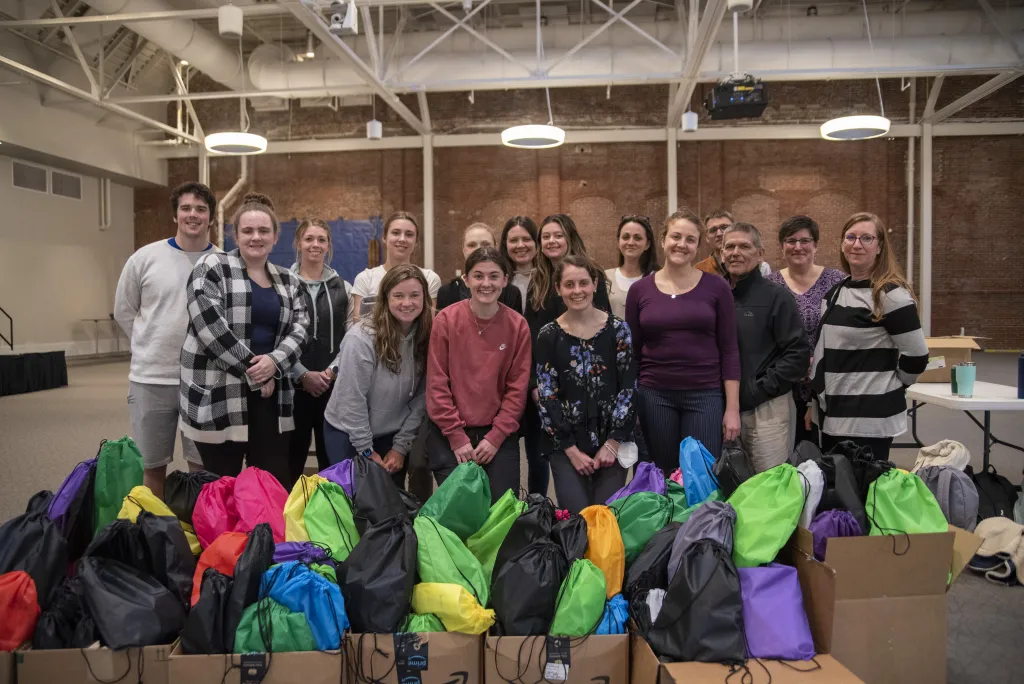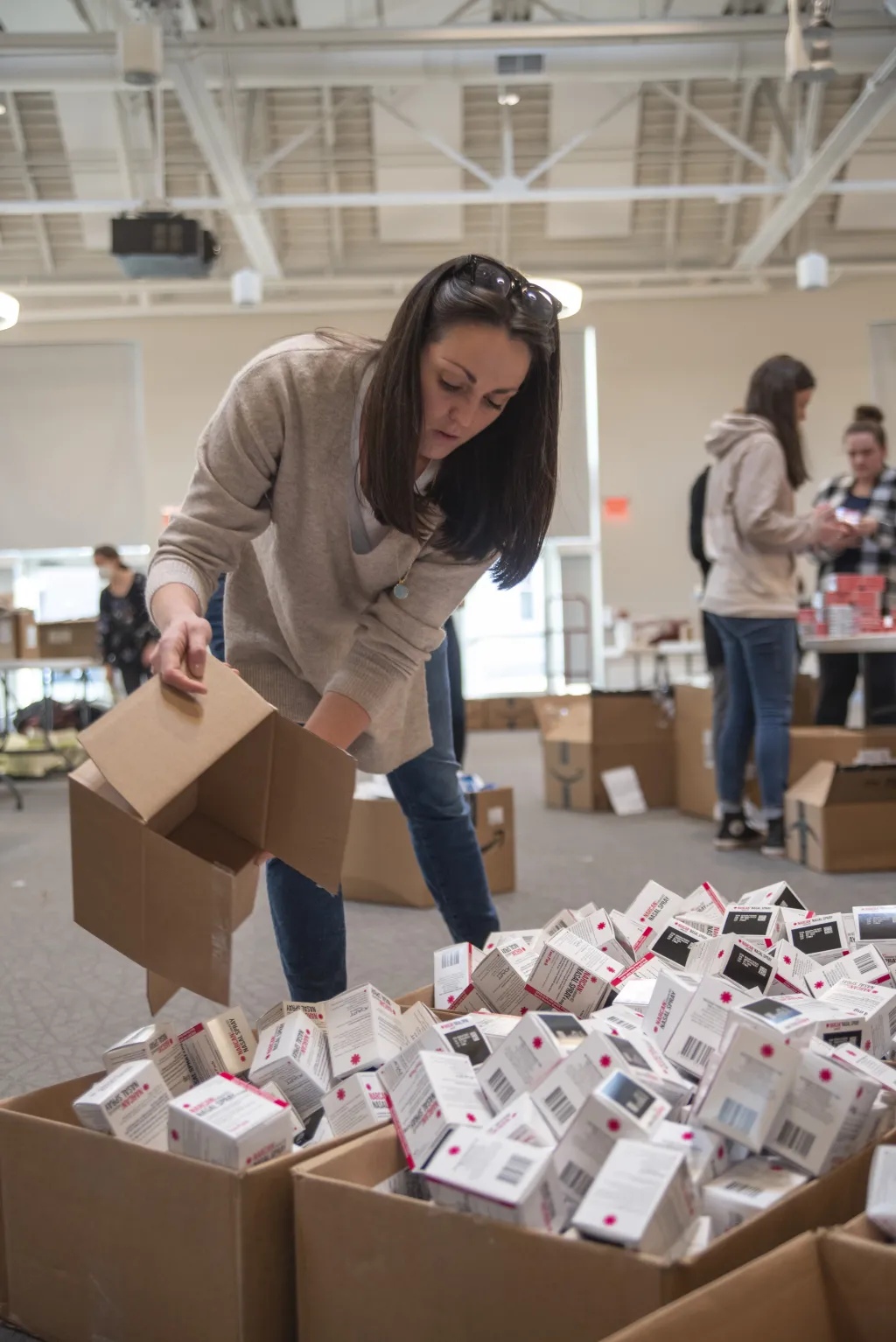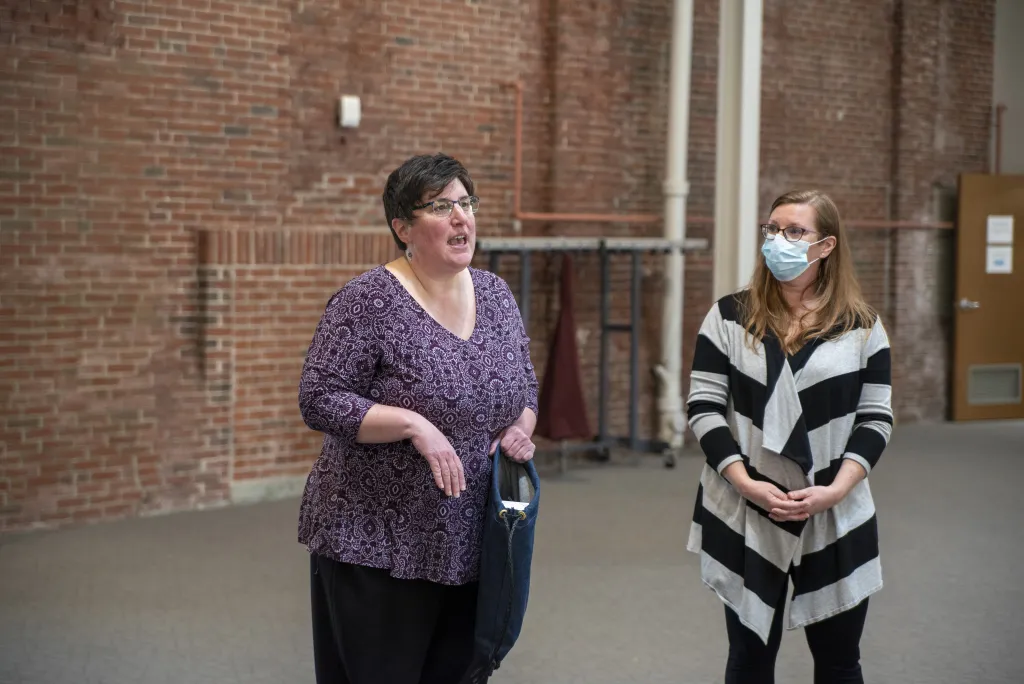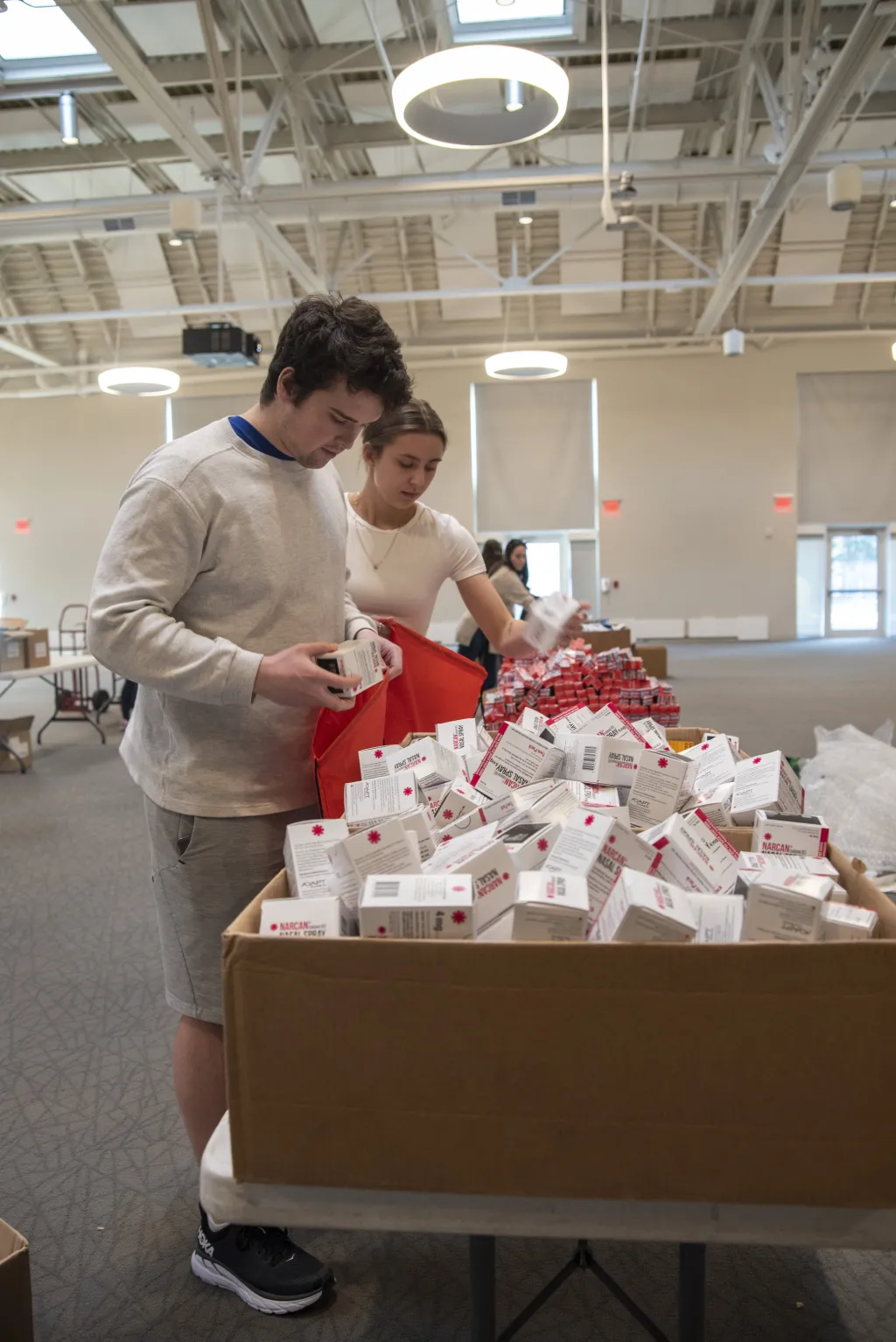Interprofessional student group assembles 800 harm reduction kits for released inmates

A dozen University of New England students from multiple health professions programs convened on Monday, March 21, to assemble hundreds of harm-reduction kits that will go to individuals being released from custody of the Maine Department of Corrections (MDOC).
Harm reduction refers to a wide range of public health practices designed to reduce the social and physical tolls of potentially dangerous activities — such as substance misuse and, consequently, drug overdose — and provide opportunities for recovery.
The event was sponsored by the UNE’s Center for Excellence in Collaborative Education (CECE) and the Westbrook College of Health Professions (WCHP) Office of Service Learning.
Kits assembled included toothbrushes and toothpaste, fentanyl test strips, contraceptives, and naloxone — an opiate overdose antidote — among other items intended to reduce harm for vulnerable individuals. The kits, 800 in total, also included handwritten cards from the students, meant to give encouragement to those receiving the kits.
“It’s important to create an environment for people to thrive in and be able to feel human — like they really mean something to other people — while also reducing harm,” remarked Hannah Hutchins (Health, Wellness, and Occupational Studies, ’22), who plans to enroll in UNE’s Master of Science in Occupational Therapy (M.S.O.T) program upon graduation. “I’ve never worked with this kind of population before, so I thought volunteering to make these kits would be a good opportunity to learn more and gain experience while preparing to become an occupational therapist.”
Chris Arbour, correctional administrator for the Region 1 of the MDOC, who gave a presentation at the kit assembly, said correctional policies have shifted from strict punishment for drug offenses to harm reduction strategies meant to support individuals.
“Incarcerating people for substance use disorder does not work,” Arbour stated. “Our main focus now is how we can make our communities safer by reducing harm through supportive interventions and empowering change. A little goes a long way. All it takes is little gesture to say, ‘We're on this journey with you, and we're here to support you.'”
Melissa Caminiti, director for medications for substance use disorder and community outreach at Wellpath, the medical provider for the MDOC, emphasized the importance of engaging students in harm reduction work.
“The important piece of partnering with UNE is to get young health professionals onboard from the start of their career — to help them understand what the realities are that folks are working with, what concerns our clientele have, and to bring compassion right to them,” she said. “
Arbour also stressed the role that interprofessional care providers play in treating residents of the MDOC.
“Corrections is more than just law enforcement,” he said. “Law enforcement officers work directly with social workers, nurses, and occupational therapists. We all work together to have successful outcomes. I can't do my job without an occupational therapist, without a nurse, without other professionals.”
Kris Hall, M.F.A., program manager of the Center for Excellence in Collaborative Education, said the practices students learned at the event will be useful for them as they graduate and become health care providers.
“Substance use disorders are one of the many complex health conditions that our graduates will face in practice,” she said. “The relationship-building opportunities and practical team experience they receive at UNE through service learning and CECE increase their readiness to be resilient and empathetic team members (and leaders) on their first day of work, providing care to patients.”
Jessica Diaz (A.B.S.N., ’23) said that, when residents from jail or prison come into her clinical rotation site at Maine Medical Center in Portland, she works with other health professionals to ensure a compassionate environment that focuses on their specific medical needs. She advocates for harm reduction as both a way to keep people safe and a systemic approach to keep emergency departments open and medical professionals available to treat other serious emergencies.
“Harm reduction is important because a lot of people go to the emergency room, and they don’t need to,” Diaz remarked. “Unfortunately, that bogs down the system for people who may be coming in off the ambulance, and it also causes unnecessary medical debt for people who may not have the budget.”
Trisha Mason, M.A., director of the WCHP Office of Service Learning, said service experiences such as this are critical to collaborative learning and success. She also said there was such enthusiasm for the project that the office plans to offer the event and related activities again each semester in the future.
“The pandemic has made it hard to bring the students and community together in person, so preparing these kits and writing the notes to each person who will receive them helps the students actively make a difference in someone’s life,” she said. “That’s what is happening here.”




